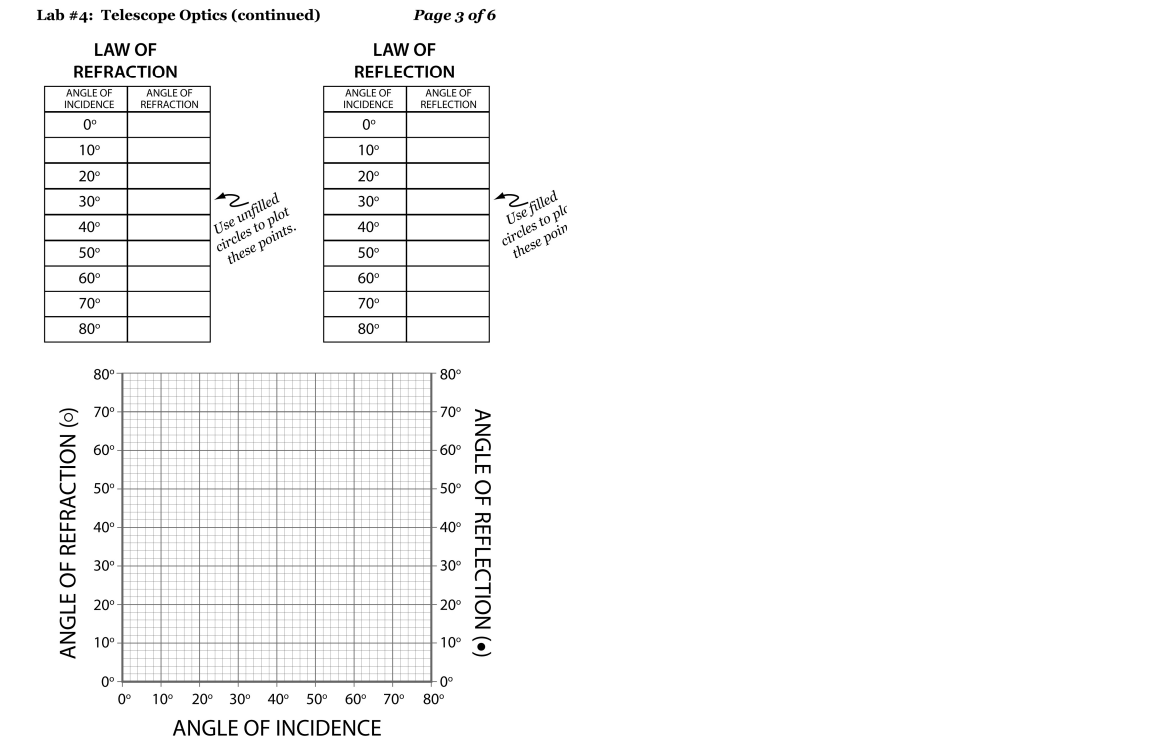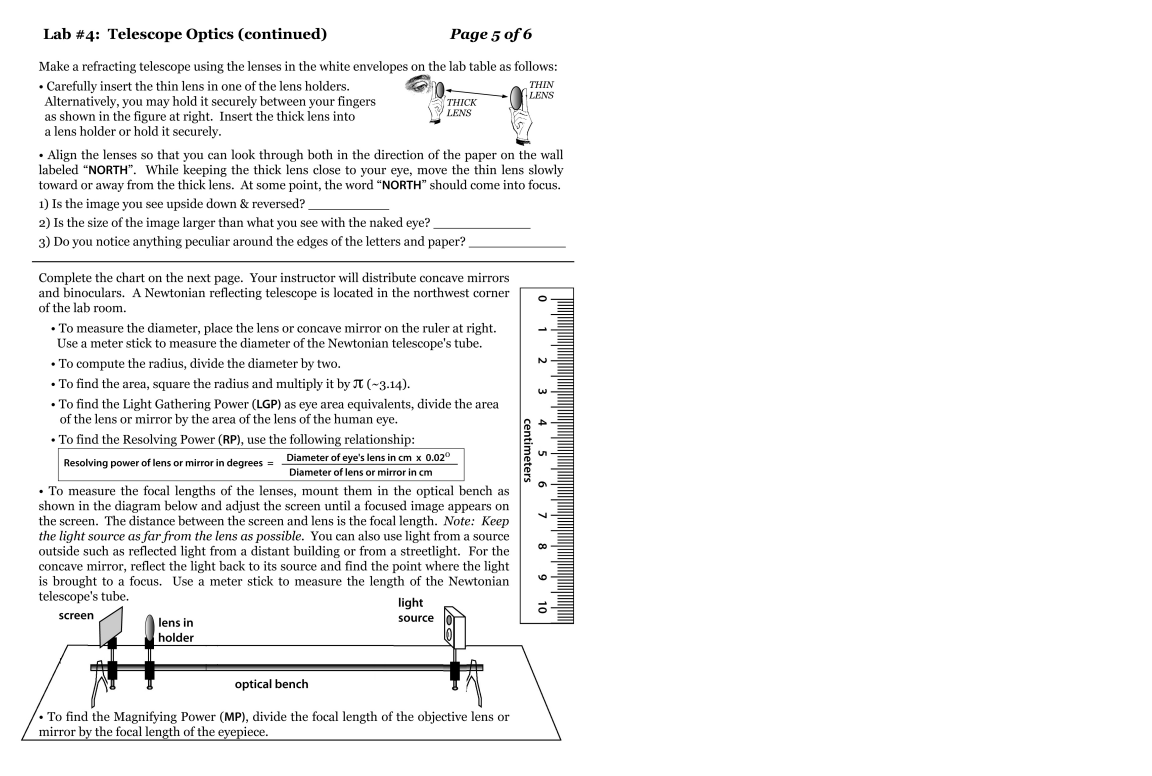ab #4: Telescope Optics (continued) Page 5 of 6 ke a refracting telescope using the lenses in the white envelopes on the lab table as follows: arefully insert the thin lens in one of the lens holders. ternatively, you may hold it securely between your fingers shown in the figure at right. Insert the thick lens into ens holder or hold it securely. lign the lenses so that you can look through both in the direction of the paper on the wall eled "NORTH". While keeping the thick lens close to your eye, move the thin lens slowly vard or away from the thick lens. At some point, the word "NORTH" should come into focus. is the image you see upside down & reversed? Is the size of the image larger than what you see with the naked eye? Do you notice anything peculiar around the edges of the letters and paper? mplete the chart on the next page. Your instructor will distribute concave mirrors binoculars. A Newtonian reflecting telescope is located in the northwest corner the lab room. THICK LENS To measure the diameter, place the lens or concave mirror on the ruler at right. Use a meter stick to measure the diameter of the Newtonian telescope's tube. To compute the radius, divide the diameter by two. To find the area, square the radius and multiply it by ♬ (~3.14). To find the Light Gathering Power (LGP) as eye area equivalents, divide the area. of the lens or mirror by the area of the lens of the human eye. To find the Resolving Power (RP), use the following relationship: Resolving power of lens or mirror in degrees Diameter of eye's lens in cm x 0.02⁰ Diameter of lens or mirror in cm o measure the focal lengths of the lenses, mount them in the optical bench as own in the diagram below and adjust the screen until a focused image appears on screen. The distance between the screen and lens is the focal length. Note: Keep light source as far from the lens as possible. You can also use light from a source side such as reflected light from a distant building or from a streetlight. For the cave mirror, reflect the light back to its source and find the point where the light brought to a focus. Use a meter stick to measure the length of the Newtonian escope's tube. screen lens in holder optical bench light source THIN LENS o find the Magnifying Power (MP), divide the focal length of the objective lens or rror by the focal length of the eyepiece. O 6
Ray Optics
Optics is the study of light in the field of physics. It refers to the study and properties of light. Optical phenomena can be classified into three categories: ray optics, wave optics, and quantum optics. Geometrical optics, also known as ray optics, is an optics model that explains light propagation using rays. In an optical device, a ray is a direction along which light energy is transmitted from one point to another. Geometric optics assumes that waves (rays) move in straight lines before they reach a surface. When a ray collides with a surface, it can bounce back (reflect) or bend (refract), but it continues in a straight line. The laws of reflection and refraction are the fundamental laws of geometrical optics. Light is an electromagnetic wave with a wavelength that falls within the visible spectrum.
Converging Lens
Converging lens, also known as a convex lens, is thinner at the upper and lower edges and thicker at the center. The edges are curved outwards. This lens can converge a beam of parallel rays of light that is coming from outside and focus it on a point on the other side of the lens.
Plano-Convex Lens
To understand the topic well we will first break down the name of the topic, ‘Plano Convex lens’ into three separate words and look at them individually.
Lateral Magnification
In very simple terms, the same object can be viewed in enlarged versions of itself, which we call magnification. To rephrase, magnification is the ability to enlarge the image of an object without physically altering its dimensions and structure. This process is mainly done to get an even more detailed view of the object by scaling up the image. A lot of daily life examples for this can be the use of magnifying glasses, projectors, and microscopes in laboratories. This plays a vital role in the fields of research and development and to some extent even our daily lives; our daily activity of magnifying images and texts on our mobile screen for a better look is nothing other than magnification.


Step by step
Solved in 2 steps with 2 images








